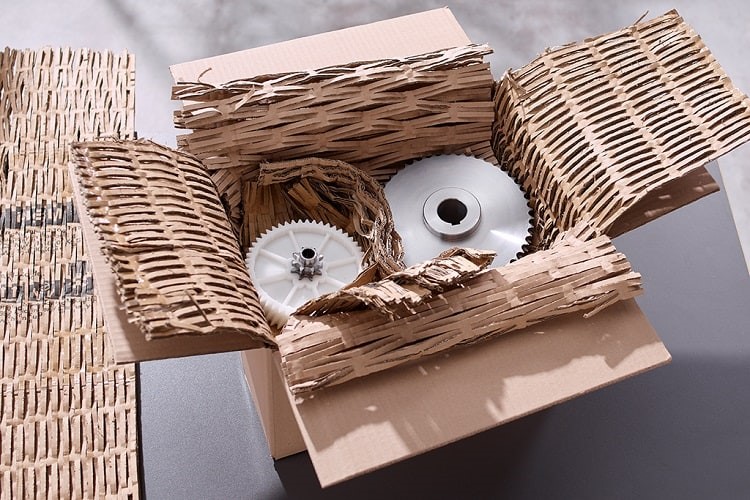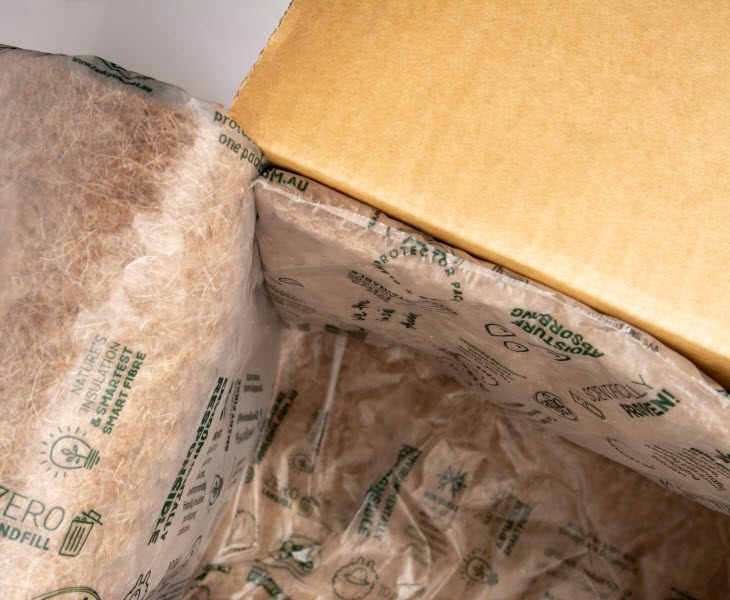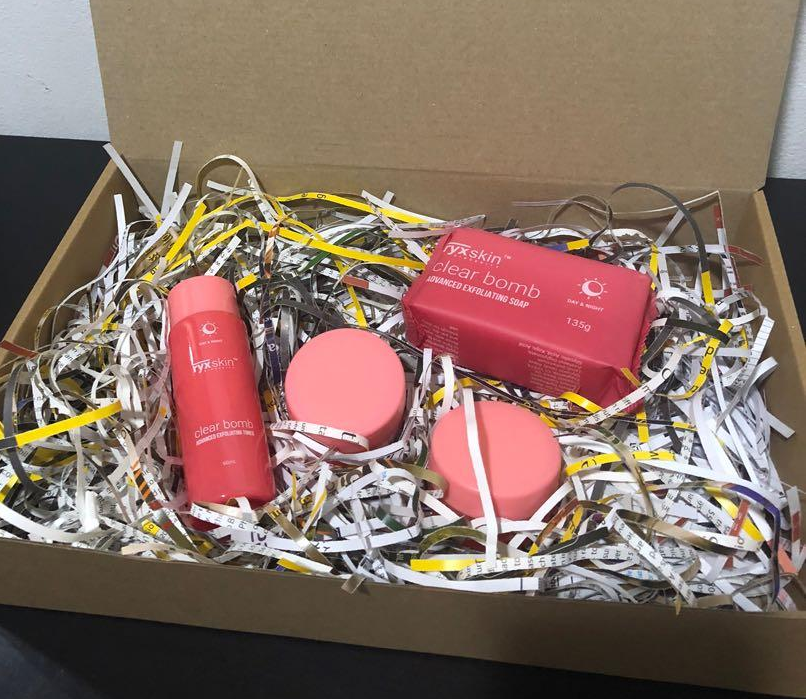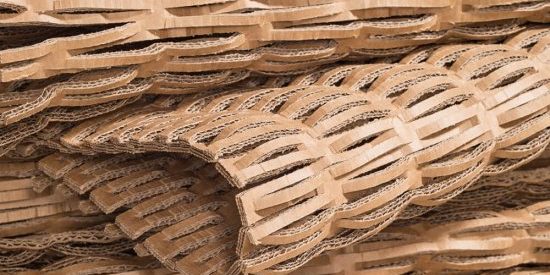The Australian Government has released its National Plastics Plan 2021 with the goals of increasing plastic recycling, finding alternatives to unnecessary plastics and reducing the impact of plastic on the environment. As part of the Plan, expanded polystyrene packaging will be phased out by December 2022. This is great news for the environment and means businesses must step up and start using more environmentally friendly packaging options.
We’ve pulled together a list of four packaging alternatives to polystyrene packaging, void fill, peanuts and boxes, that won’t break the bank or the planet!
1. Perforated cardboard (also known as corrugated cardboard, cardboard padding or cardboard bubble wrap)
Businesses all over Australia are switching to perforated cardboard. It is easily recyclable by customers, made from recycled cardboard boxes and doesn’t cost an arm and a leg.
Perforated cardboard has been punctured in a honeycomb-like pattern to make it flexible and soft – perfect for protecting products during transport.
The great thing about perforated cardboard is that it is cheap. In fact, if you have a perforating machine, you can feed your old cardboard through it to create eco-friendly packaging that doesn’t cost a cent! In fact, it can save your business money in two ways:
- You are recycling your old cardboard boxes and don’t need to buy any packaging, and,
- You will no longer have to pay for a cardboard collection and recycling service!
Read this case study on how a small business eliminated bubble wrap and saved hundreds of dollars a year by using a perforated cardboard machine.
Interested in a perforated cardboard machine? We recommend the Mastershred ProfiPack machine, which comes in different sizes depending on the amount your business needs.

Photo: Perforated cardboard packaging (Source: Mastershread)
2. WoolPack by Planet Protector Packaging
Planet Protector Packaging’s WoolPack product is a great sustainable alternative to polystyrene boxes.
Cardboard boxes and pouches are lined with packs of waste wool, which would otherwise be discarded to landfill. Wool has excellent natural insulating properties: it keeps sheep warm in winter and cool in summer.
WoolPack has been proven to outperform polystyrene packaging. It’s a great option for fresh foods, seafood, chocolates, pharmaceuticals and other products that need to be in a stable temperature during transport.
Woolpack wool felts are 100% biodegradable, compostable and sustainable. The outer packaging can be recycled by customers via the REDcycle program. However, the WoolPack liners can be reused multiple times so setting up a reverse logistics solution to collect and reuse the packaging is a great option that will save money and waste in the long term.

WoolPack (Source: Planet Protector Packaging)
3. Recycled shredded paper
Pros – Recycled shredded paper is a cheap and easy way to fill the void in small packages and provide some protection of products during transport. It has the added benefit of reusing used paper, giving it a second life. It’s a great solution to fill the void in small packages and for non-breakable products.
Cons – In many council areas in Australia, shredded paper cannot be effectively sorted by Material Recovery Facilities (MRF). This is because of the loose strands that can separate during collection and transport, make a mess and even cause litter. This means it is unlikely to be recycled. Plus, lots of shredded paper would be needed to effectively protect breakable items like glass, electronics and large packages. If the paper isn’t glossy or inked, customers may be able to compost it.

Shredded recycled paper (Source: Carousell)
4. 100% recycled tissue paper
Pros – Tissue paper is lightweight, cheap and can be scrunched up to fill any voids in packages. Buying recycled paper supports the recycling industry, gives resources a second life and saved trees from being cut down.
Cons – Make sure your tissue paper is 100% paper and not coated with any chemicals. This ensures that the tissue paper can be recycled or composted by your customers. Like shredded paper, lots of tissue paper would be needed to effectively protect breakable items or fill the void in large or bulky packages.
Make sure to buy recycled so that you’re not packaging your product with trees!

Recycled tissue paper (Source: Kraft)
Avoid ‘degradable’ and ‘biodegradable’ packaging alternatives
When looking for an environmentally friendly alternative to polystyrene or bubble wrap, avoid plastic items labelled as ‘biodegradable’, ‘degradable’ or ‘oxo-degradable’. This might include PLA wrap, degradable bubble wrap, biodegradable peanuts or PLA air bubble void fill.
Degradable plastic and oxo-degradable plastic is still plastic. It also contains a chemical that breaks it up into microplastics more rapidly. This creates more litter and is worse for the environment.
There is no one definition for ‘biodegradable’ in Australia. In fact, it is a generic term that does not provide specific or verifiable information on the biodegradability of a given polymer. Many products with this label are merely greenwashing. Some ‘biodegradable’ plastics still contain plastic, and others, even if made from plant sources, won’t break down naturally in the environment.
What about compostable packaging?
The Australian Packaging Covenant Organisation (APCO) says, “If the packaging is intended to be recovered through commercial or home composting then select polymers that are certified to the Australian Standards AS 4736–2006 (commercial composting) and/or AS 5810–2010 (home composting).”1
A word of caution: APCO also says that “less than half of Australian households are able to or interested in actively composting at home”. Therefore, we recommend choosing packaging that can easily be recycled (or reused) at home (or by businesses, if you are B2B).1
A final note
Whatever you choose, make sure you confirm with the manufacturer how the packaging should be disposed of or check to see if the packaging displays the Australasian Recycling Label (ARL). Then, make sure you pass this information onto your customers so they know exactly how to dispose of the packaging.
Source
1Australian Packaging Covenant Organisation Compostable Packaging Guide (2014)







